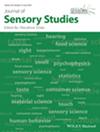This study aimed to investigate the relationship between the gender and personality traits of individuals and their ability to detect, identify, and discriminate odors. The dataset on olfactory performance was compiled from a panel of 207 healthy human volunteers. The dataset for the odor identification test was collected using a set of 10 distinct odorants, and the odor discrimination test dataset was collected using a well-established “Sniffin sticks” (Burghardt®, Wedel, Germany) odor discrimination test kit. To assess the Big Five personality traits of study participants, a self-report survey questionnaire based on the International Personality Item Pool-Neuroticism, Extraversion, and Openness (IPIP-NEO) was used. Here, we conducted a statistical analysis to investigate the role of personality measures and gender on olfactory performance, as well as the relationship between olfactory performance and perceived odor intensity, pleasantness, and familiarity. The findings of the study suggest the existence of some relationships between gender and personality traits and odor discrimination and identification, but not odor detection. Conscientiousness and openness to experience personality traits were positively correlated with odor identification, while agreeableness and conscientiousness personality traits were positively correlated with odor discrimination. The extroversion personality scale was negatively correlated with odor discrimination. Additionally, male participants performed better than females in odor identification tasks, while females performed better in odor discrimination. The neuroticism personality domain was associated with odor identification tasks in males but not in females when analyzed separately. Correct identification of odors was also associated with their perceived familiarity.
The results of this study may have important practical implications for a range of industries, including the fragrance and food industries. These findings may help tailor products to specific consumer preferences based on personality and gender, enhancing product appeal. Further, the fragrance and food industries can develop targeted marketing campaigns using fragrances and flavors associated with particular personality types or genders. Similarly, product testing can also be improved by representing a diverse range of personality types and genders to obtain more accurate feedback. The study insights can further guide the development of flavor and taste pairings that resonate with specific personality and gender groups. Overall, by considering olfactory differences related to personality and gender, the fragrance and food industries can segment their target markets more effectively and design products that appeal to different consumer groups.


